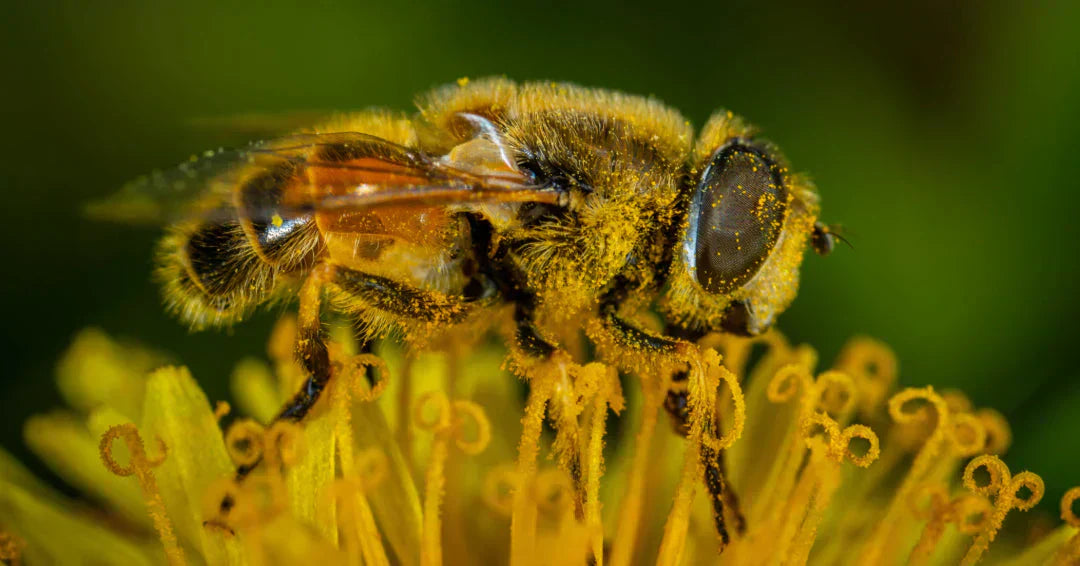If you take your children for a walk outdoors on a warm day, you are bound to notice a these yellow and black striped critters going about their business, but the threat of a painful sting is enough to induce anxiety and negative feelings toward these valuable insects. Knowing bee facts is essential because it helps us understand their fundamental role in our ecosystem and food supply. Bees are more than just honey-making insects; their existence is directly linked to the health of our environment and our own well-being. They are the world's most important pollinators and our food supply is heavily dependent on them. Learning about bees also helps kids overcome common fears and promotes conservation. When we understand their behavior— such as the fact that most bees aren't aggressive and only sting when they feel threatened— we can replace fear with respect. This knowledge is key to protecting these vital creatures. Here are some facts about bees that kids will find enlightening.

Why Kids Should Learn About Bees
Children often learn to fear bees because of their sting. By teaching them about bee behavior and their purpose, we can replace that fear with respect and curiosity. Kids can learn that most bees aren't aggressive and only sting when they feel threatened. The reality is that bees are not really interested in you (unless you are eating something sweet and sticky), so it's best to just move along and leave them alone. Swatting at bees or squashing them with a shoe may seem like a good idea. Most of the time, we don't pay attention to the important work being done by butterflies, spiders, caterpillars, centipedes, or any of the other critters. But when a bee is buzzing around, it's natural to feel a little nervous about the threat of a sting. But if your kids truly understand the magical work these buzzy insects do, they will think twice next time. Read some children's books about bees that will enlighten little ones about all the wonderful ways they contribute to the environment.
Everything To Know About the Role of Bees
Teaching kids about bees helps them see the big picture. They learn that every creature, no matter how small, plays a vital role in nature's balance. This lesson instills a sense of responsibility and compassion, making them more curious about the world around them. Bees are considered a keystone species in many environments, meaning their role is far more important than their size suggests. By pollinating wild plants and flowers, bees allow these plants to reproduce, which provides food and shelter for countless other animals, from insects to birds and mammals. Bees are also responsible for pollinating a huge portion of the food we eat every day. It's estimated that one out of every three bites of food depends on bees. Without them, many of our favorite foods- like fruits, vegetables, nuts, and even ingredients for chocolate and coffee- would be scarce or disappear entirely. Here are some fascinating facts about bees that every kid should know.

(1) Honeybees are divided into three different working classes.
First Class
The first is the Queen, who is the one holding all the power in a particular bee hive. As the sole reproducer for her hive, the eggs she lays guarantees the survival of future generations. She typically lives about 5 years and lays around 2,500 eggs per day during the summer months.
Second Class
The second class of bees are the Workers, which represent an all-female group with huge responsibilities for the upkeep and protection of the hive. They are the only ones to leave the hive to forage for nectar and pollen, necessary nutrition for all the bees in the hive. Workers guard the hive dangerous invaders and keep it clean by flapping their wings to circulate the air.
Third Class
The third and lowest ranking members of the hive are the Drones. These male bees have one purpose only- to mate with the queen. Hundreds of male bees live in the hives during the spring and summer months, but they are tossed out when winter arrives.

(2) There is a process for transferring power to a new queen bee.
When the queen bee dies, there is an established protocol that all honeybees follow in appointing a new leader. Of all the babies in the hive, one larva is selected as the chosen one. From there, the bees feed the larvae a food commonly referred to as the "royal jelly" in order to make her fertile. It is not until then that all power, respect and honor is bestowed upon her Royal Highness.
(3) Bees have big personalities.
They may look exactly alike, but don't be fooled by their exterior. Researchers have found a wide array of behaviors among bees, suggesting that they are not just a bunch of interchangeable insects. Just like humans, some bees are very hard workers while others demonstrate signs of laziness. There have also been some interesting observations indicating some bees are reserved and timid while other bees desire thrilling experiences. Also, agitating bees definitely seems to cause an emotional reaction!
(4) Climate change is contributing to the declining population of bees.
The good news is that while the honeybee population is declining, the rate is slowing compared to previous decades. In the past, the bee population was estimated to be declining by 9% year over year, but that rate has since improved to about 4%. Both the Environmental Protection Agency and the CDC got involved in studying and establishing policies to protect honey bee colonies, thus contributing to the improving trend. Climate change is an undeniable problem when it comes to the livelihood of bees. Extended periods of drought affect the floral nectar and pollen bees need to survive and produce honey. In regions with extreme rain, bees are limited in terms of time to fly and forage for food. Additionally, the increasing use of pesticides and elimination of natural habitats both have an adverse impact on bees.
(5) Honeybees flap their wings 230 times per second.
A honeybee's buzzing sound is actually the sound of its wings flapping incredibly fast—up to 230 times per second. This rapid wing movement is also essential for flight. Unlike many other insects, bees flap their wings over a small distance but at a very high frequency. This quick, choppy motion creates the powerful lift needed to not only stay airborne but also carry heavy loads of nectar and pollen back to the hive.
(6) Worker bees are the only ones with barbed stingers.
Worker bees have barbed stingers because they are the colony's main defense against large threats, like bears or humans. When a worker bee stings a thick-skinned animal, the barbs on its stinger get caught in the skin. When the bee tries to fly away, the stinger is ripped from its body, a fatal injury. This sacrifice is an effective defense because the detached stinger continues to pump venom and release a pheromone that tells other bees to join the attack.
(7) Queen bees have smooth, barbless stingers.
A queen bee has a barbless stinger because it's designed to be used as a weapon against other queens. As the sole reproductive female, the queen must eliminate any rivals to ensure her survival and, by extension, the survival of the entire colony. A new queen will hunt down and sting to death any other newly hatched or developing queens. To do this without dying herself, her stinger is smooth and can be used multiple times.




